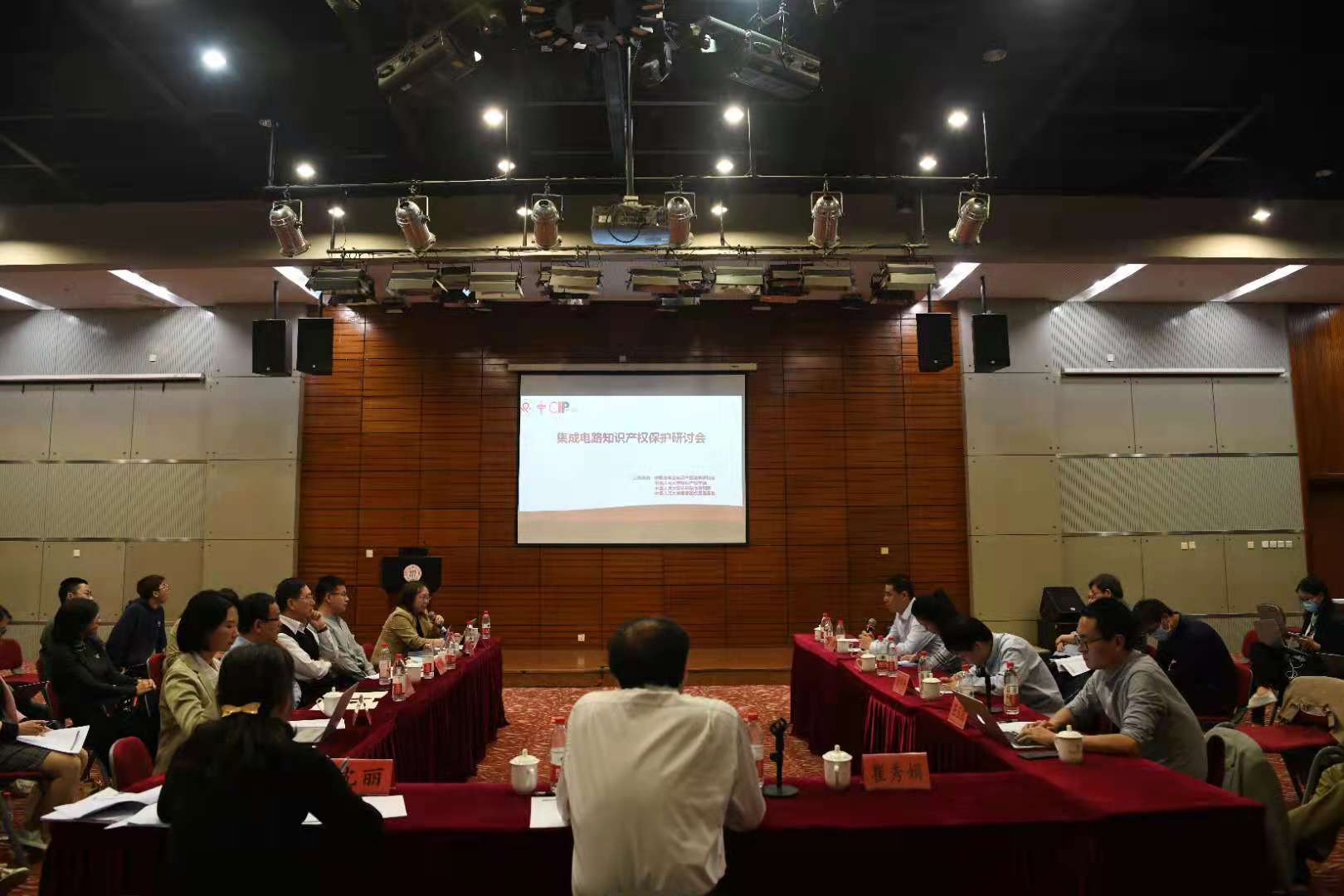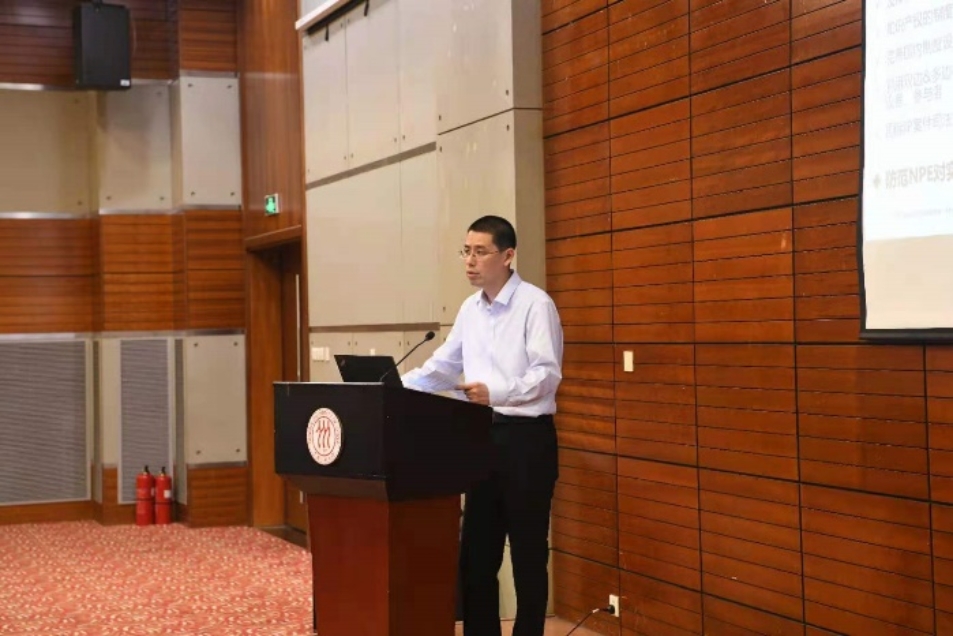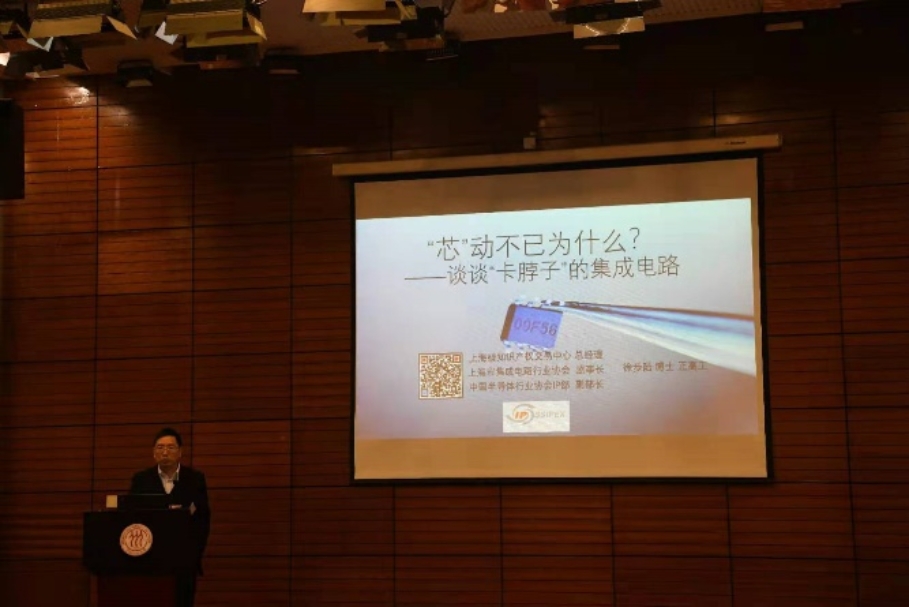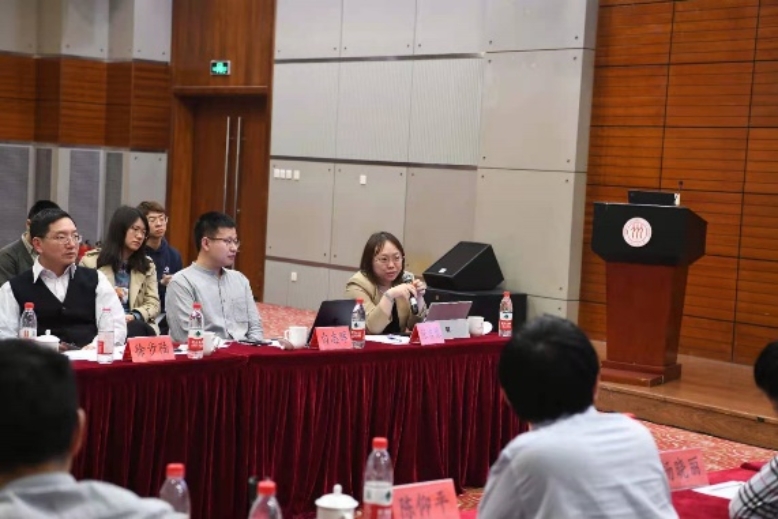The Seminar on “Intellectual Property Protection of Integrated Circuit in China” Successfully Held
time:2021-04-26On April 24&25, 2021, Renmin University of China hosted the second CIPnet Roundtable on the theme of “IP Protection of Integrated Circuits in China”, inviting scholars from leading Chinese universities, enterprises from IP service platforms and public officials from official institutions to discuss the development, pain point and strategy of the IP protection of integrated circuits (IC) in China.

Scientific and technological achievements mainly refer to the results of applied science and technology, and the transformation of scientific and technological achievements is extremely important for a basic and national strategic core industry like IC. Currently, the protection of intellectual property rights of ICs is mainly carried out through the Protection of Integrated Circuit Layout Designs Regulations Implementing Rules, the Patent Law and the Anti-Unfair Competition Law. Is the protection mechanism constructed by these laws conducive to the development of IC industry? Is it conducive to the transformation of technical achievements of ICs? What are the urgent problems that need to be solved at present? The purpose of this roundtable is to discuss the above questions and listen to the opinions and suggestions from all parties.
 CHEN Yangping, Researcher from Department of Preliminary Examination and Process Management, SIPO, pointed: Since China promulgated ‘the Protection of Integrated Circuit Layout Designs Regulations Implementing Rules’ in 2001, its overall application volume has been growing slowly. However, the growth of IC layout design applications has been very rapid since 2017, which actually reflects the policy orientation and external environment in China. At present, there is a certain lag in the protection of IC layout designs in China. For example, in terms of agency matters in the application registration process, the Patent Law has cancelled the relevant provisions of foreign-related agency a long time ago, while the Regulations on the Protection of Integrated Circuits and the Implementation Rules have not made any form of amendment since 01 to now. Therefore, in the future amendment process, it may also need to pay attention to the adaptability between the relevant legal provisions and the coordination between the regulations themselves and the industrial development.
CHEN Yangping, Researcher from Department of Preliminary Examination and Process Management, SIPO, pointed: Since China promulgated ‘the Protection of Integrated Circuit Layout Designs Regulations Implementing Rules’ in 2001, its overall application volume has been growing slowly. However, the growth of IC layout design applications has been very rapid since 2017, which actually reflects the policy orientation and external environment in China. At present, there is a certain lag in the protection of IC layout designs in China. For example, in terms of agency matters in the application registration process, the Patent Law has cancelled the relevant provisions of foreign-related agency a long time ago, while the Regulations on the Protection of Integrated Circuits and the Implementation Rules have not made any form of amendment since 01 to now. Therefore, in the future amendment process, it may also need to pay attention to the adaptability between the relevant legal provisions and the coordination between the regulations themselves and the industrial development.
 SUN Yan, IP Engineer of IC from Huawei Technologies Co. pointed that from the perspective of the system, China's Patent Law should focus on the incentive of high-value innovation instead of blindly pursuing quantity. Nowadays, with the continuous development of integrated circuit technology and the changing form of product, there are difficulties in defending the rights of the patent, both in terms of confirmation and enforcement of rights. Take IC patent litigation as an example, the difficulties of proof and excessive thresholds faced by the right holders have largely hindered their motivation for subsequent innovation. In other words, when it comes to international IP cases, how to improve China's discourse and influence, fully export China's rules, and protect our innovative enterprises with a good judicial environment is perhaps the issue that needs further consideration.
SUN Yan, IP Engineer of IC from Huawei Technologies Co. pointed that from the perspective of the system, China's Patent Law should focus on the incentive of high-value innovation instead of blindly pursuing quantity. Nowadays, with the continuous development of integrated circuit technology and the changing form of product, there are difficulties in defending the rights of the patent, both in terms of confirmation and enforcement of rights. Take IC patent litigation as an example, the difficulties of proof and excessive thresholds faced by the right holders have largely hindered their motivation for subsequent innovation. In other words, when it comes to international IP cases, how to improve China's discourse and influence, fully export China's rules, and protect our innovative enterprises with a good judicial environment is perhaps the issue that needs further consideration.
 BAI Zhihui, Researcher of Intellectual Property Academy, Renmin University of Chinabelieves it is true that IC layout design as a way to protect the IP of ICs is limited by the times. In fact, the number of layout design applications and related disputes in many developed countries is very small, which is determined by the changing technological environment. For China's integrated circuit intellectual property rights, if we want to protect them through layout design, then we must clarify the boundaries of their rights and the objects to be protected. On the other hand, there is the issue of the effectiveness of the registration of the layout design. In my personal opinion, the effectiveness of the registration of an IC layout design can be referred to the registration of copyright law. In this case, the applicant's expectation of the rights of the layout design is relatively low. Although this may weaken the effectiveness of the registration, it actually reduces the risk of the administrative authorities in engaging in the registration process.
BAI Zhihui, Researcher of Intellectual Property Academy, Renmin University of Chinabelieves it is true that IC layout design as a way to protect the IP of ICs is limited by the times. In fact, the number of layout design applications and related disputes in many developed countries is very small, which is determined by the changing technological environment. For China's integrated circuit intellectual property rights, if we want to protect them through layout design, then we must clarify the boundaries of their rights and the objects to be protected. On the other hand, there is the issue of the effectiveness of the registration of the layout design. In my personal opinion, the effectiveness of the registration of an IC layout design can be referred to the registration of copyright law. In this case, the applicant's expectation of the rights of the layout design is relatively low. Although this may weaken the effectiveness of the registration, it actually reduces the risk of the administrative authorities in engaging in the registration process.

XU Bulu, General Manager of Shanghai Silicon Intellectual Property Exchnage Co. pointed IC intellectual property protection is not only a legal issue, but also a business issue. For universities, we can consider more methods such as empirical research and quantitative analysis to explore the relationship between the legal system and the economic benefits of the industry. At the same time, many characteristics of the IC industry determine the special nature of its intellectual property protection. For example, the IC industry usually has a strong aggregation effect. As a result, highly sophisticated technologies are mastered by a few enterprises and the mobility of high-end talents is very narrow, which actually leads to the difficulties of IC in the process of trade secret protection. In addition, in the context of the trend of counter-globalization and the tension between China and the U.S., the flow of technology has been reduced, and how to use the intellectual property system as an innovative element of the IC industry is also a question we need to think about.
 ZHANG Jun, General Manager of Cellixsoft Co. believed in the field of integrated circuits, patent litigation has become a regular means of competition among large international enterprises. In fact, Apple, Qualcomm, Intel and other foreign advanced enterprises face a large number of patent disputes every year, of which more than 90% of the cases end in settlement. With the continuous expansion of enterprise scale, the occurrence of international patent disputes has become inevitable. In the face of such risks and challenges, Chinese enterprises should make full use of the IC big data platform to explore high-value patent information and make strategic layout of patent operation in advance.
ZHANG Jun, General Manager of Cellixsoft Co. believed in the field of integrated circuits, patent litigation has become a regular means of competition among large international enterprises. In fact, Apple, Qualcomm, Intel and other foreign advanced enterprises face a large number of patent disputes every year, of which more than 90% of the cases end in settlement. With the continuous expansion of enterprise scale, the occurrence of international patent disputes has become inevitable. In the face of such risks and challenges, Chinese enterprises should make full use of the IC big data platform to explore high-value patent information and make strategic layout of patent operation in advance.
 In the comment and free discussion session, ZHANG Jiyu, Executive Director & Associate Professor of Renmin Law and Technology Institute, put a question to SUN Yan: whether Huawei often involves patents that consist of multiple modules in the process of patent application? For example, the patent directly reflects in the claims that part of its modules are implemented by software while another part is implemented by a dedicated integrated circuit. Will this type of claim encounter any obstacles in the examination process? SUN Yan believes Huawei does often involve this type of patent in the process of patent application. The issue is mainly related to the clarity of the claims and the functional limitations. For such patent applications, it may depend more on the discretion of the patent office. During the subsequent validation process, there are not many cases related to such patents in courts, but such issues may be frequently involved in the United States. Therefore, the attitude of the laws of different countries towards such patent applications may also be something that we need to study and explore in the subsequent process.
In the comment and free discussion session, ZHANG Jiyu, Executive Director & Associate Professor of Renmin Law and Technology Institute, put a question to SUN Yan: whether Huawei often involves patents that consist of multiple modules in the process of patent application? For example, the patent directly reflects in the claims that part of its modules are implemented by software while another part is implemented by a dedicated integrated circuit. Will this type of claim encounter any obstacles in the examination process? SUN Yan believes Huawei does often involve this type of patent in the process of patent application. The issue is mainly related to the clarity of the claims and the functional limitations. For such patent applications, it may depend more on the discretion of the patent office. During the subsequent validation process, there are not many cases related to such patents in courts, but such issues may be frequently involved in the United States. Therefore, the attitude of the laws of different countries towards such patent applications may also be something that we need to study and explore in the subsequent process.
 SHEN Li, Director, the Review and Invalidation Department, SIPO, believes that in the whole chip production process, different production steps can actually be protected by different intellectual property rights. For example, we may need to protect the design ideas of IC design drawings and the subsequent process manufacturing flow with patents. Therefore, enterprises in different segments of industrial chain may need to choose the corresponding IPR for protection according to the stage of IC production.As examination staff, we have encountered some confusion in our practice. When China's IC layout design protection regulations were formulated in 2001, the level of the industry it targeted was relatively low, and with the rapid development of the IC industry in recent years, some of these regulations may no longer apply to many of the complex issues nowadays.
SHEN Li, Director, the Review and Invalidation Department, SIPO, believes that in the whole chip production process, different production steps can actually be protected by different intellectual property rights. For example, we may need to protect the design ideas of IC design drawings and the subsequent process manufacturing flow with patents. Therefore, enterprises in different segments of industrial chain may need to choose the corresponding IPR for protection according to the stage of IC production.As examination staff, we have encountered some confusion in our practice. When China's IC layout design protection regulations were formulated in 2001, the level of the industry it targeted was relatively low, and with the rapid development of the IC industry in recent years, some of these regulations may no longer apply to many of the complex issues nowadays.
GUO He, Associate Dean & Professor of Intellectual Property Academy, Renmin University of China, summarized the meeting. He pointed that if we deconstruct ICs from the perspective of intellectual property rights, they can be broken down into patents, trade secrets, layout designs and other levels; if we understand them from the perspective of science and technology as a whole, we need to consider the transformation of technical achievements of ICs. As a national strategic core industry, the protection of intellectual property rights of ICs and the transformation of technical achievements are like two sides of a coin. Take the transformation of scientific research results in China's universities as an example, the assessment index of university teachers is still based on thesis publication and project undertaking, which to a certain extent hinders the practical application of IC research in industry. Therefore, it is important to strengthen the connection between universities and enterprises. We need to establish corresponding institutions for transformation of university scientific and technological achievements, create a platform for cooperation between industry, university and research institutes, and promote government cooperation for the transformation of IC innovation results.

